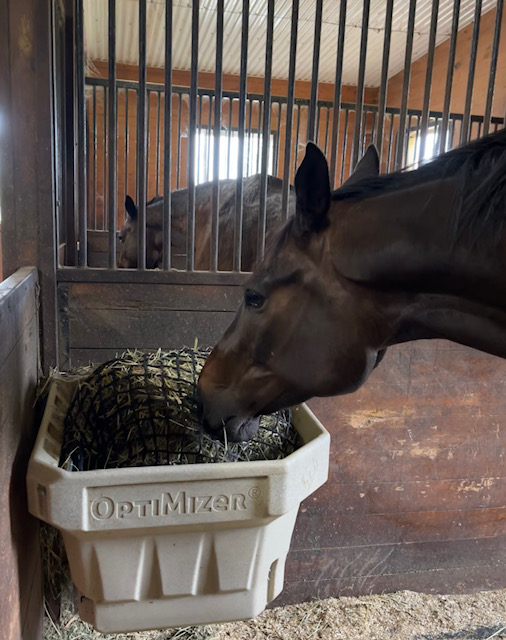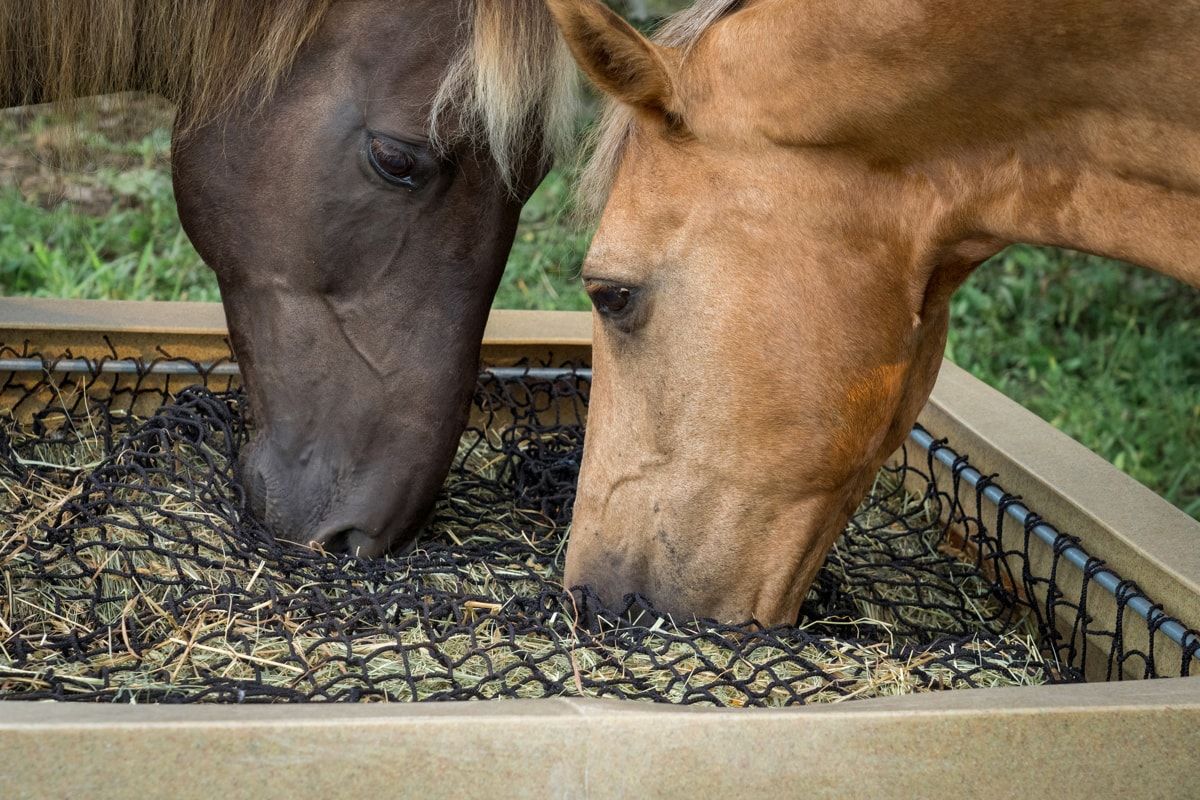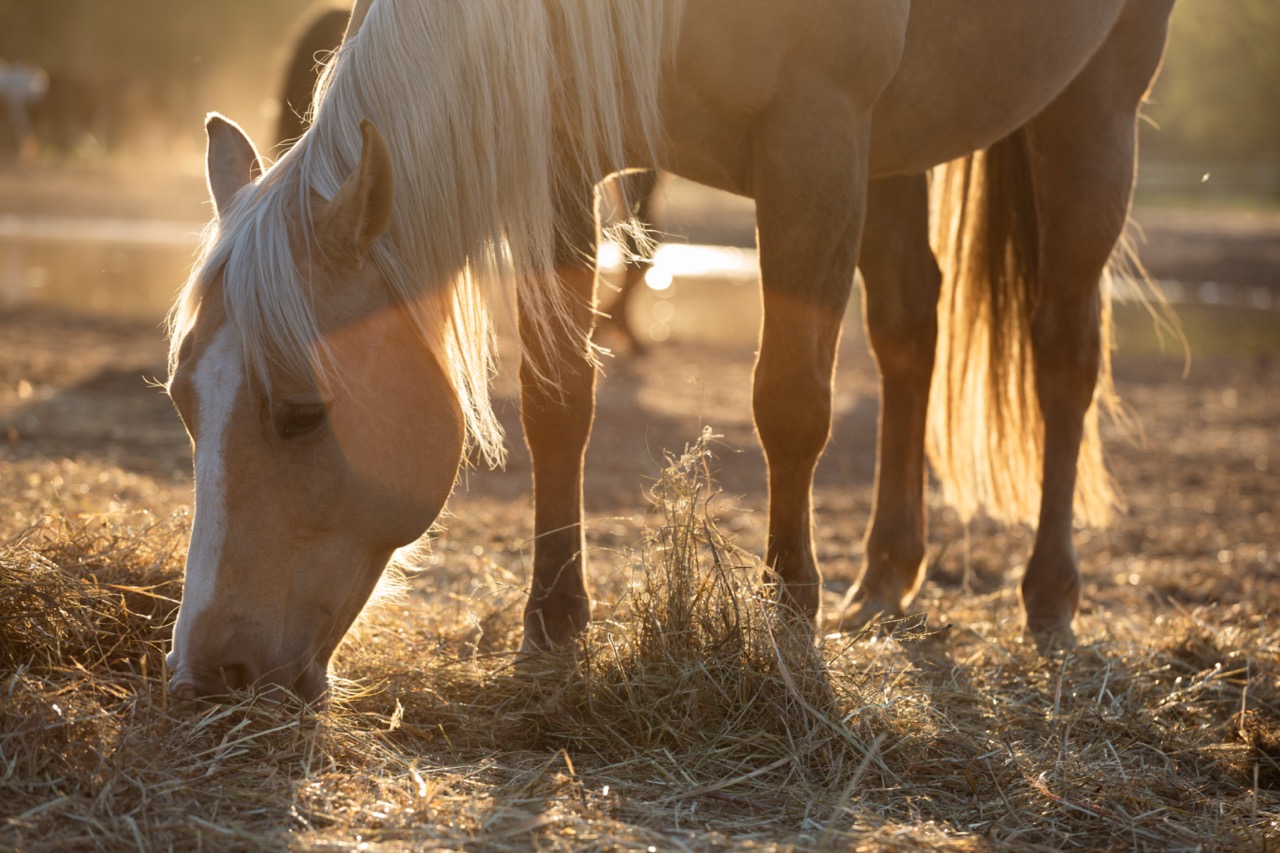Now that fall is upon us, many horse owners are beginning to transition from pasture to hay.
The problem is that many of us get stuck in a rut, feeding hay in the same manner year in and year
out. It’s important to stop and think about what’s best for our horses though. Sometimes, that
means we might need to make some changes.For example, here are the top 5 mistakes people often make when feeding hay:
#1 Feeding from a Raised Position
Twenty years ago, when we built my barn, each stall came with a raised hay feeder that made
hay feeding a snap. However, back then, I didn’t know that horses should not eat with their
heads raised for extended periods of time. Feeding hay from a lowered position is best because
it supports their natural grazing behavior, places less strain on the skeletal structure and soft
tissues, and allows horses to clear inhaled dust.
#2 Not Feeding Enough Hay
Many people see hay as a filler instead of an important nutrient source, and this can be a
problem, especially when high amounts of grain or concentrates are fed when compared to the
amount of hay. Horses should eat at least 1.5 to 2% of their body weight in forage per day. This
means that a 1000 pound horse needs at least 15 pounds of hay each day. Feeding less than
this can increase the chance of developing digestive problems like gastric ulcers and colic.
#3 Not Using Slow Feeders for Easy Keepers
If you have a horse that tends to stay fat on air, it may be tempting to withhold hay from them.
However, starvation isn’t the solution. In this case, it’s best to slow down their consumption so
that they can maintain normal blood glucose levels. This is best done with a slow feeder such as
the Hay OptiMizer® or InStall Hay OptiMizer®.


#4 Feeding Low-Quality Hay
Hay can be a great source of both protein and minerals and buying good-quality hay can
actually save you money in the long run because you won’t need to feed as much grain. Good
quality hay should be green in color and smell and appear fresh. Also, keep in mind that hay
quality diminishes over time, so after it has been stored for a year or more, it’s not going to be
nearly as nutritious.


There are a lot of benefits to feeding alfalfa, one being that it’s high in protein and several
important minerals. However, problems can occur when alfalfa is the only type of hay fed, as it can
cause a calcium/phosphorus imbalance. Likewise, too much protein can be hard on a horse’s
kidneys. And yet a third issue is that a diet high in alfalfa has been linked to enteroliths.
Hay really is for horses, but to best support them, avoid these five common hay-feeding
mistakes!




